Best and Worst Crops For Beginners
What are the best and worst crops — aka easiest and most difficult — for beginning gardeners to grow? Of course, you want to grow what your family likes to eat, but you also want to consider crops that are fairly easy. That way, you can find success early and then venture into the crops that command a slightly steeper learning curve.
Join me as I share my top ten best and worst crops for beginners and well as tips to grow these crops easily. I’ll also share five crops that may not be as easy for beginners to master. That way, you can either skip them in the beginning or give yourself some grace as you try them.

Keep in mind, although my list is full of some of the easiest crops to grow, you’ll want to be sure that your family loves that vegetable or herb before you add it to your list of things to grow. Otherwise, you’ll end up with a crop that no one wants to eat, and there is no need to waste the time and resources on that.
Before we begin, if you’d like to watch a podcast episode instead about the best and worst crops for beginners, you can watch that here:
Which Crops are the Best and Worst for Beginners?
Let’s go over the best and worst crops for beginners with these topics:
- Best Crops for Beginners
- Baby Greens
- Peas
- Green Beans
- Cucumbers
- Basil
- Parsley
- Radish
- Squash
- Potatoes
- Small Fruited Tomatoes
- Okra and Sweet Potatoes
- Worst Crops for Beginners
- Celery
- Broccoli/Cauliflower
- Brussel Sprouts
- Spinach
- Large Fruited Tomatoes
Don’t forget to snag your 2024 Garden Planner now to help you on your journey to do some effective companion planting this year.
Best Crops For Beginners
Before I share the entire list of best crops for beginners, you might want to grab our When To Plant Cheat Sheet. This cheat sheet will help you know exactly when to plant each of the crops I’ll go over today. Trust me, you’ll love it, especially if you are new to gardening.
Baby Greens
Our first on the list of best crops for beginners is baby greens. You can choose a lettuce greens mix (also known as a mesclun mix) or any other kind of green mixes. A lot of these contain greens in the brassica plant family, including kale, arugula and mustard greens. My personal favorites are the ovation greens mix and the premium greens mix from Johnny’s seeds.
When you plant these seeds, you don’t have to worry about plant spacing so much. Just scatter the seeds maybe a half inch or so apart from each other (though I never measure). It’s okay that they are close together because you will be harvesting them as baby greens — only 3-6″ tall.
The reason why this is my number one crop for beginners is because they are fast to sprout and are less sensitive to soil temperature. Also, you will be harvesting them when they are young, sometimes less than 30 days, which feels productive for a beginner.
Peas
Second on our list of best crops for beginners is snap peas. They harvest earlier than shelling peas, and you don’t have to plant as many plants to get a good crop. The reason snap peas are at the top of my list is because they can be directly sown in your garden — no indoor seed starting required. Also, the actual seed is large enough that it’s easy to handle and space out as you plant.
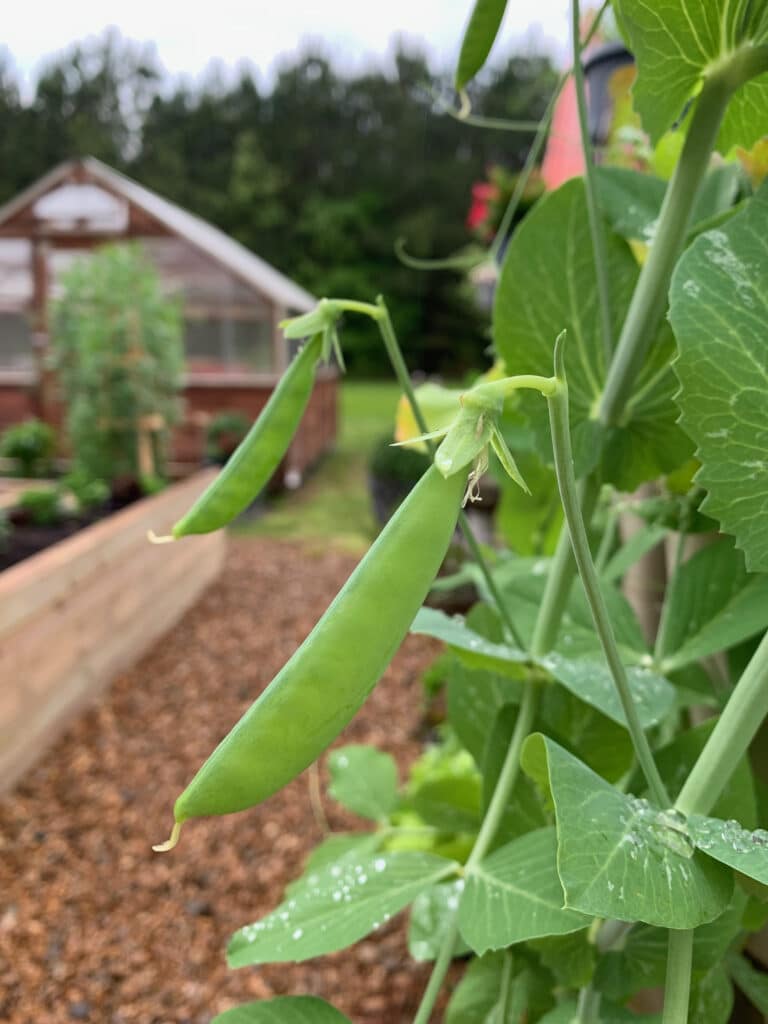
Once peas germinate, they grow fairly quickly. I like to plant my peas in early March and am usually harvesting them in May. I’ve also learned that if you get your snap peas planted early you tend to have less pest pressure to deal with.
Remember, peas are a cool weather crop, they will grow better when it’s a bit cooler, not in the heat of the summer. It’s best to plant them in the spring or fall.
Green Beans
Next on our best crops for beginners list is green beans (bush or pole). Both types are easy to grow because you can direct sow them in your garden. It’s important to note that you need to wait until the soil is warm enough – into the 60’s as a minimum. Once they sprout, they grow fast!
Green beans love the warmer weather of spring and early summer, but they don’t like to grow very well in the hottest part of the summer; in fact, when temps hit over 90, they might stop flowering altogether. This is usually temporary, so when it happens, just keep them watered and when the temperatures come down, you might get your best harvest!
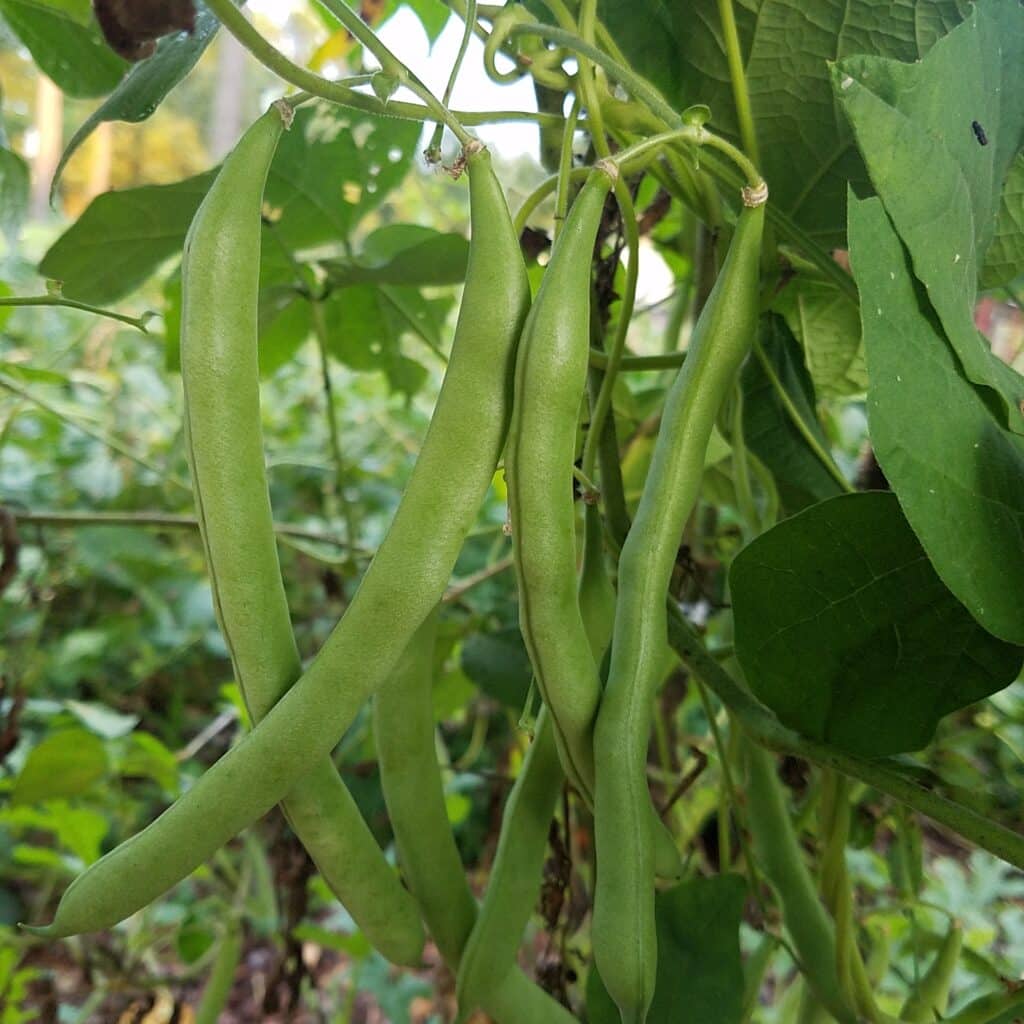
Beans also don’t tend to have a lot of disease issues, which is why they are on my list of best crops for beginners.
Cucumbers
Next, let’s talk about another of our best crops for beginners – cucumbers. Cucumbers are a summer crop that love warmer temperatures. It’s best to plant your cucumbers after your beans when the soil has warmed up so you can direct sow your seeds.
Cucumbers don’t like to be transplanted, so it’s best not to start them indoors. Just wait until the soil is warm enough and then direct sow them into your garden. This crop is especially fast growing and you can do multiple plantings of them throughout your growing season.
Keep in mind, cucumbers can have disease problems, like powdery mildew. One way I combat this is by buying hybrid varieties that are specifically disease resistant.
If you run into trouble and notice your cucumber plant is no longer producing, consider planting in succession to keep a steady flow of fresh cucumbers in your garden.
Basil
Moving on to the next plant on our list of best crops for beginners is an herb, basil. As long as you plant basil in warm soli, it will sprout. Basil is a great crop to start indoors if you have space and time, because it has no problem being transplanted. It’s also great to grow from seed. One of the best things about basil is that it’s not bothered by heat.
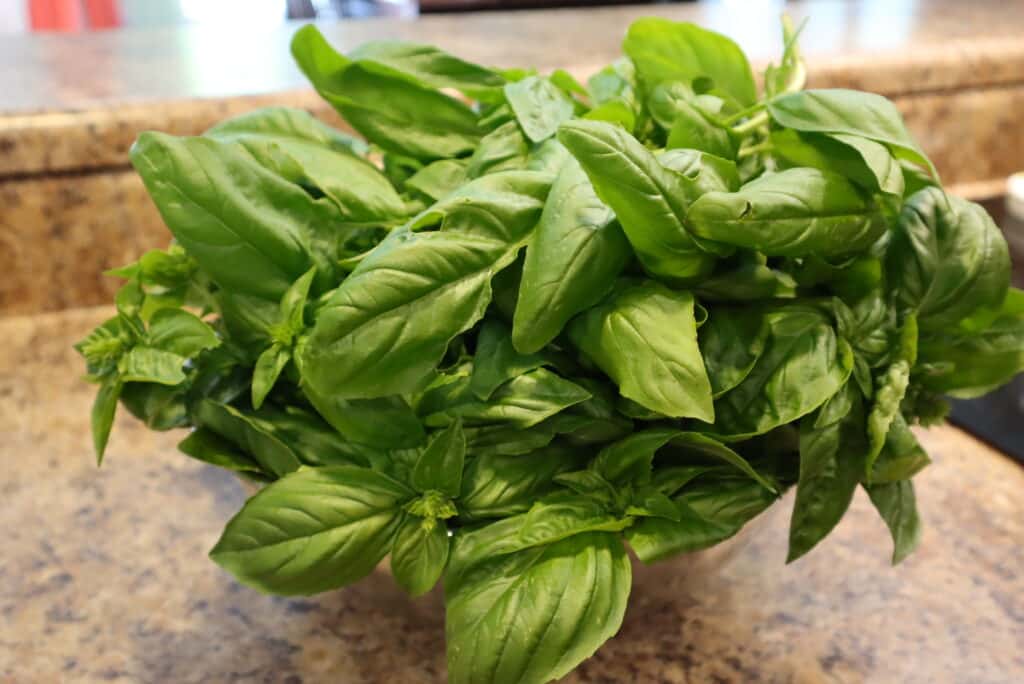
Basil is a crop that has a short life cycle. It grows quickly and then goes to seed quickly. If you want the best quality leaves of basil, you need to be on top of pinching it consistently like this.
Parsley
Our next herb that is on the list of best crops for beginners is parsley. I recommend you purchasing a transplant from the garden center. While parsley can be started indoors, it’s slower to grow and requires. more management.
Parsley tends to be fairly heat and cold tolerant. Since it is also biennial plant, which means it produces leaves the first year and goes to seed the second, it will produce leaves the entire first season and perhaps all winter depending on your zone. Then it will overwinter if your zone allows for that and it will start to produce seeds the second season.
Radish
Our next crop on the best crops for beginners list is radish. Radish is a great choice because the seeds are very easy to sow and they only take about 30-45 days to fully grow.
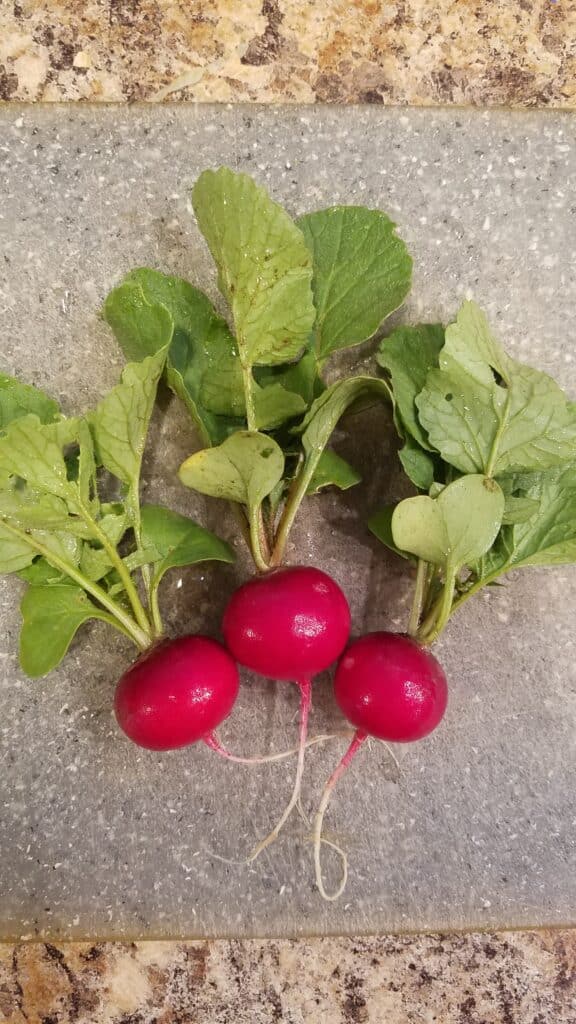
A radish seed is not super tiny, so it’s easy to handle and it can be shallowly sown in the soil.
Radish is a cool season crop that is great to plant early in the spring because they do not like heat. When your temperatures rise, they will bolt. In fact, radish becomes more spicy in flavor when it gets warmer – it’s a reaction to the heat.
There are some types of radish varieties that are spicy by nature, but if you prefer a sweeter radish, make sure to plant early in the spring.
Squash
Squash (summer squash/zucchini) is up next for our best crops for beginners. While it can have its challenges with pests and disease, it can also produce the most harvest of just about any crop in your garden.
It’s best to sow squash seeds directly into your soil in the garden, but you need to wait until your soil temperature is at least 60 degrees. Squash crops love the heat and once they start to sprout, they will grow very quickly. A squash plant can be ready to harvest in as little as too months. But because they don’t mind the heat, they can grow all summer until frost.
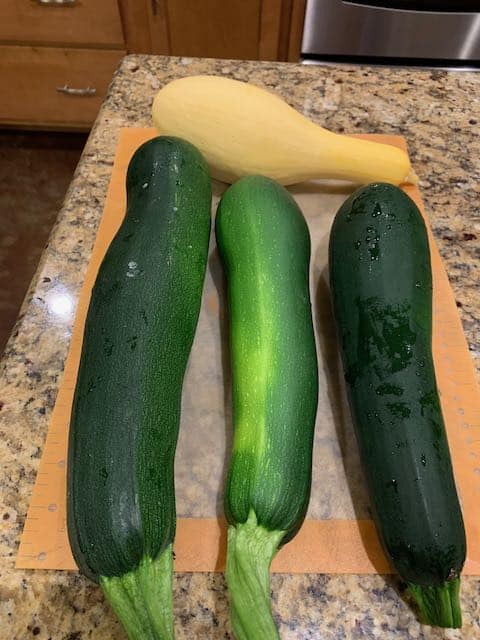
Usually, pests and disease prevent one crop from growing until frost, but there is a workaround. You can plant multiple plantings of squash throughout your warm growing season. That way you can have squash all season long, that is, if you love squash! If you do experience any disease or pest issues, you can go ahead and pull that plant out of your garden, discard it and plant seeds again like you can see me do in this video.
Potatoes
Moving on to the next crop on our list of best crops for beginners is potatoes. The reason I recommend these is they are a plant and forget it type of crop. Potatoes are very easy to grow. All you have to do is plant a seed potato once the soil is at least 50 degrees and then you wait for the stems to grow vibrantly, then get ugly and die back. At that point, they are ready to be dug up.
When the stems start to yellow and lose their vigor, you might think they are dying, but they are actually transferring their energy into the tubers they are developing. Then you harvest!
Sometimes you can deal with pests and blight, but seldom will it result in a total crop failure. Potatoes are a great choice for beginners because they are very low maintenance and even if you do have pest issues you will still have a crop to harvest.
Small Fruited Tomatoes
Finally, our last crop on the list of the best crops for beginners is small fruited tomatoes like cherry, grape, and plum tomatoes. These types of tomatoes are easier to grow and will give you better luck as a beginner. This is because they are smaller (requiring less energy from the plant to provide a ripe fruit), and you get to harvest earlier.
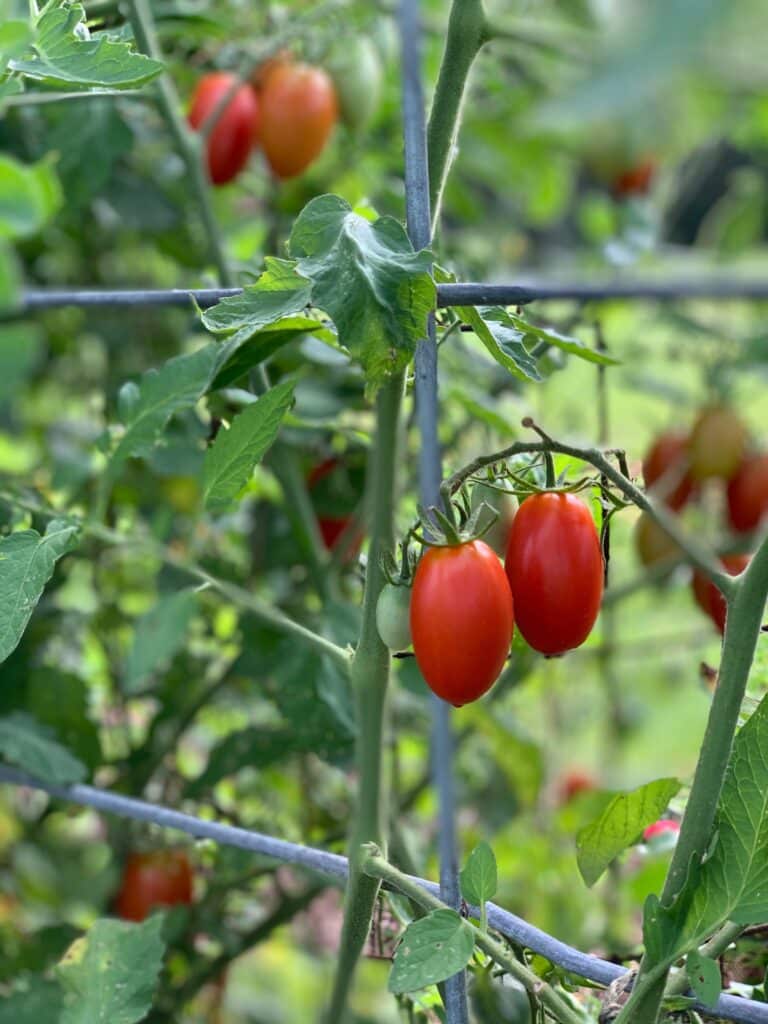
Okra and Sweet Potatoes
If you are a southern gardener, I would also recommend okra and sweet potatoes as well to the list of best crops for beginners. Okra and sweet potatoes love the heat and are by far, some of the easiest to grow if you get long, hot summers.
Worst Crops For Beginners
Now we need to discuss the worst crops for beginners to tackle. These are the plants that I instantly think, “oh no” when I hear beginners are attempting to grow them.
The reason I tend to think that is because not only have I had challenges myself in growing these crops, but I’ve also seen beginners over the years struggle in similar ways. Because it’s my hope that all gardeners would succeed, especially beginners, I want to make you aware of the challenges you may face if you grow these crops as a first-time gardener.
Just remember, some crops are frankly, harder to grow. This doesn’t mean you are a bad gardener; it’s just that some crops are tricky no matter how experienced or inexperienced you are.
Celery
Celery is number on my list of most difficult crops for beginners because it’s very picky about the season it grows in. Not only does celery dislike the cold, but it also doesn’t like heat either. It’s your Goldilocks of the garden.
The hotter the temperatures get the more chewy your celery will be and also it will tend to get spicy in flavor. Bolting early is another common problem with celery for a spring planting.
On the opposite side, while celery can take a frost, I’ve found that it suffers damage at temperatures below 30.
For these reasons, for those of us who garden in areas where mild spring and fall weather are short windows, it can be challenging. However, if you garden in a more mild climate, with long, “goldilocks” weather, you will have better success.
Celery plants also tend to be very thirsty and they will require more water than other other crops. Overwatering your other crops can be a problem when trying to grow celery next to them because it demands so much water.
Broccoli and Cauliflower
Next on our worst crops for beginners list is broccoli and cauliflower. Broccoli is another crop that doesn’t like the heat and often beginners will plant their broccoli too late. When this happens, before the heads have a chance to form, it will bolt. That means that instead of a nice, full head of broccoli, the broccoli produces beautiful yellow flowers. The pollinators love it, but that’s not what you had in mind when you planted.
I finally found success with broccoli by planting it in the fall garden. Once I found varieties that work well in my climate — like Green Magic and Castle Dome — I’ve been able to find success growing it in both spring and fall. But it took many seasons of failure to fine-tune growing broccoli.
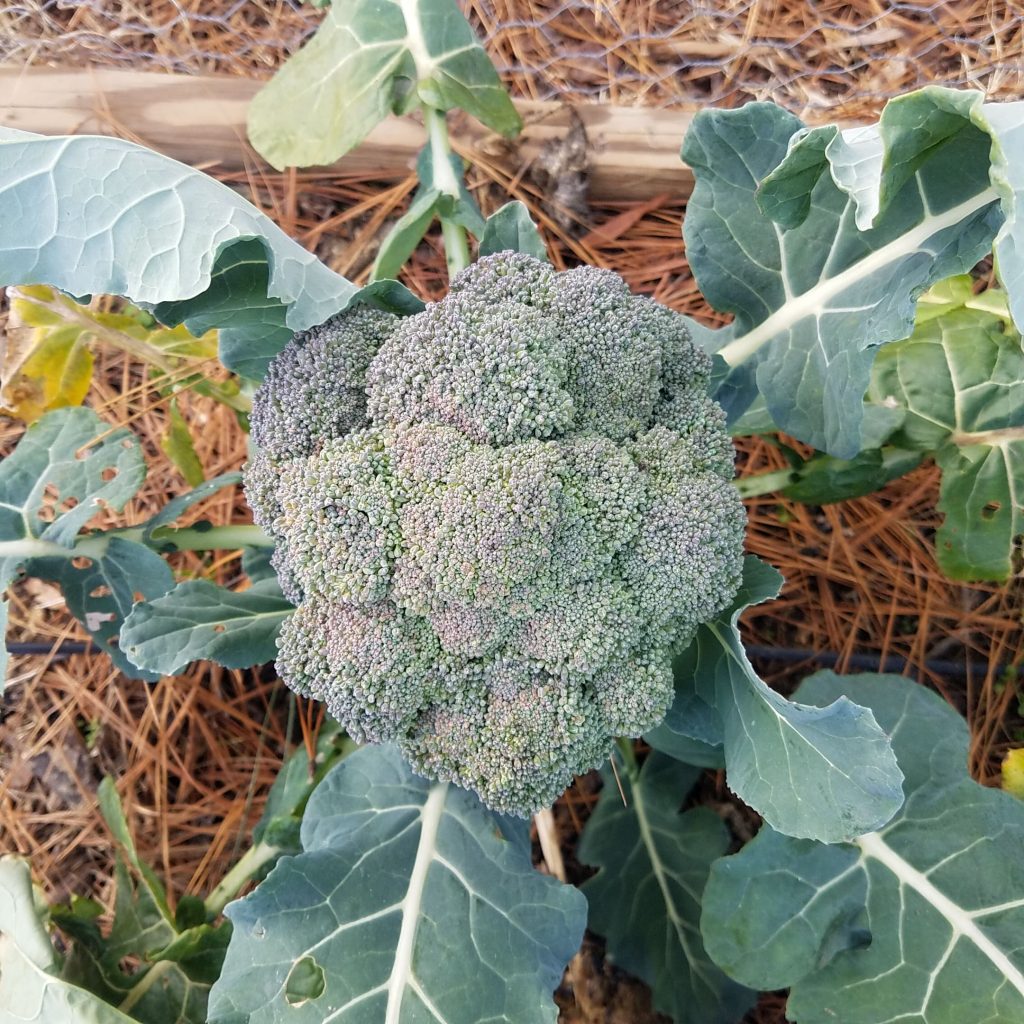
I also included cauliflower because others have expressed to me that cauliflower can be more difficult than broccoli.
Like celery, these two crops may be more difficult for me because of my climate; if you experience a long, mild spring, you may have quicker success.
Brussels Sprouts
Brussels sprouts are next on our list of worst crops for beginners for a lot of the same reasons. This crops likes the cool weather, in fact, they can survive the winter in many places. But, they take a very long time to grow, which can discourage a lot of beginners.
Avoiding the heat while providing a long enough growing season for these crops — at the time of year when precious sunlight is usually scarce — can present a difficult challenge. I personally have tried twice and decided to give up…for now.
For those reasons, I don’t recommend beginners try to grow Brussels sprouts. But again, your climate may be more conducive to growing this crop, so ask locally and see if other gardeners have success with it.
Spinach
Next on our most difficult crops for beginners list is spinach. Spinach is a tricky crop because most beginner gardeners don’t realize that spinach is a cool weather crop that doesn’t like heat. Often they don’t plant it early enough in the spring.
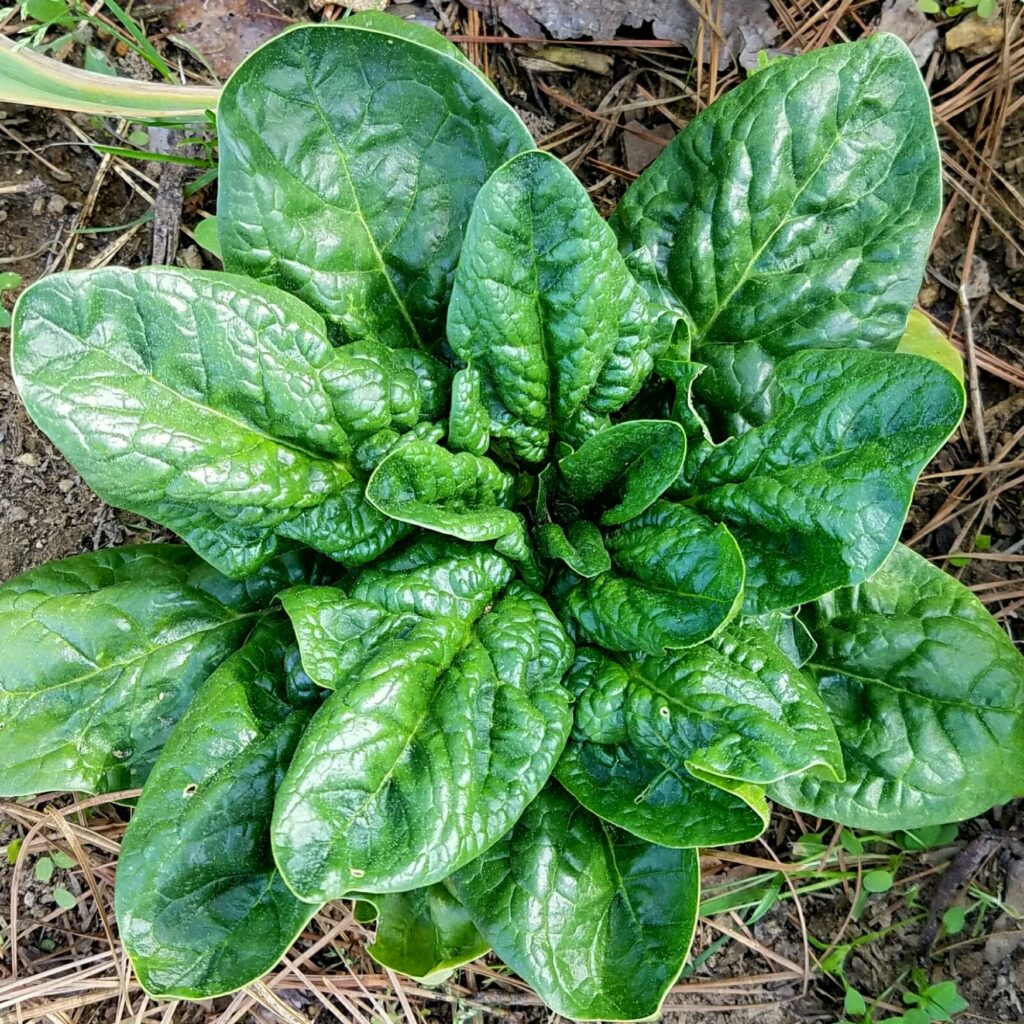
Spinach also will bolt at the first sign of stress – which is often caused by heat but sometimes can be caused by something as little as transplanting or temporary water stress.
Most beginners don’t realize just how early they need to plant their spinach in order to keep it happy. Spinach starts bolting in my garden when temperatures rise into the 70s consistently. This is usually when beginners start to plant their gardens. If it’s too late for you to plant a spring planting of spinach, try fall. It loves the fall and even the winter in many zones.
Large Fruited Tomatoes
Finally, the last on our list of most challenging crops for beginners are large fruited tomatoes like Cherokee Purple, Black Krim, Brandywine…most of the delicious heirlooms that gardeners desire. But, they aren’t without their challenges.
These large fruited tomatoes require a lot of plant energy and time to produce a harvest. This means there are more chances for things to go wrong as well.
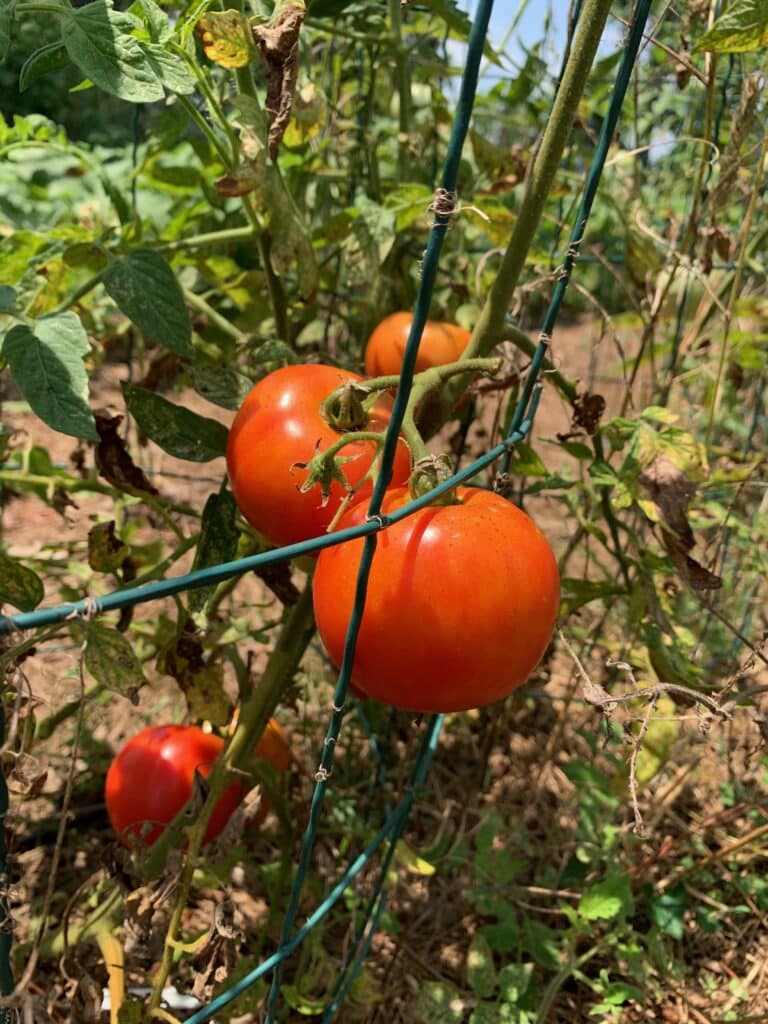
Larger tomatoes tend to be more prone to disease, blossom end rot, and some pests like stink bugs. The most troublesome pests tend to descend on us later in the summer, which is when these tomatoes are just starting to fruit. Some larger tomato varieties are prone to cracking as well.
Success with tomatoes often depends on your climate. It’s always good to ask other gardeners or your local nursery for suggestions about which variety of larger tomato does well in your specific climate.
There you have it! My best and worst crops for beginners list. My hope is that you have learned why some of the crops you may have tried in the past didn’t work and you’ve also realized you are not as bad of a gardener as you first thought. I always suggest going with the easier crops first. Then, once you get experience, you can tackle some of the more challenging ones.
Don’t forget to grab our When To Plant Cheat Sheet!
Do you get overwhelmed with garden planning?

Subscribe here for my best tips to plan your garden in just 7 days -- all for FREE.
Plus, I'll send you my "In the Garden E-mail" on Fridays, periodic updates on garden resources relevant to you, and you'll receive access to my entire bank of free garden downloads!
You are also agreeing to our privacy policy.



thanks for including best and more difficult plants to grow. This year I was wondering why the parsley I sowed indoors was taking for-ever. I didn’t realize that.
And I agree on small verses large tomatoes. I never seem to get as many slicers as cherry tomatoes. I thought it was my impatience.